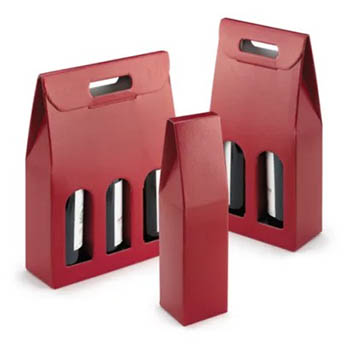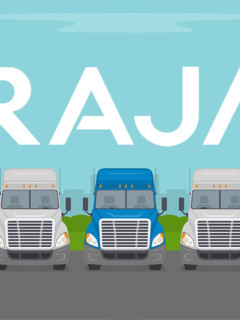Who is actually liable if goods are damaged or lost during transport? Due to the many “parties involved” in transport, this is a complex question. What are the rights and obligations of the buyer, the seller, the transport service provider, the driver or the vehicle owner?
Admittedly: Occasionally in physics lessons I had at best a vague idea of how all the formulae and calculations would be of practical service to me. There was talk of centrifugal, inertial and frictional forces, of leverage, acceleration and weight. In fact, a multitude of these forces affect us every day, and we make use of many of them – often unconsciously: If the shopping basket does not slide off the passenger seat during a possibly somewhat abrupt braking manoeuvre, then, to put it simply, it is thanks to a favourable combination of the seat cover’s own weight (force) and coefficient of friction.Responsibilities in transport safety
But who is liable for damage during the transport of goods by truck? Potentially responsible: the consignor, the loader, the driver and last but not least the vehicle owner.According to § 411 HGB, the consignor has the duty to pack the goods (…) in such a way that they are protected against loss and damage and that no damage occurs to the carrier. The law (and common sense) further states: The consignor has the duty to stow and secure the goods in (container) or on (pallet) a load carrier in a manner safe for transport and, if necessary, to mark them.
Let’s imagine a pallet with 3 large boxes stacked on top of each other being picked up by a haulage company.
A load is considered safe for carriage by road if it can withstand the forces of an emergency braking manoeuvre (0.8g) and the forces of an evasive movement (0.5g).
For our pallet, this means that the load must be reliably connected to the pallet so that packages and load carriers do not “go their own way” even at 0.8g (in the self-test, this can be simulated with a tipping angle of 38 degrees!). This is called the creation of a load unit.
Transport safety: Who is responsible for what?
A “grey area”: Legally, the shipper is also still responsible for loading the pallet onto the truck – in practice, however, the forwarder already takes over here, with a lift truck and/or lifting platform. However, if the loader notices defects, he must point them out and give instructions to correct them.(gdv)
Figures on load securing on German roads
According to surveys by the German Insurance Association (GDV), which for years inspected lorries on the autobahns together with the police, in as many as 70 per cent of cases the load is not secured properly or – which is said to be even more common – not secured at all. These and more figures: gosslar-institut.deLoad securing: Duties and responsibilities
Finally, load securing is also legally the responsibility of the lorry driver as the carrier. He must therefore prevent the pallets from sliding around on the loading area or, in the worst case, even from tipping over – and he must do this before the start of the journey and, if necessary, also on the way, for example by tightening the tensioning belts.However, it can only do this if the vehicle owner (the freight forwarder) has fulfilled its duty! This consists of providing a transport vehicle suitable for the cargo in question as well as the appropriate means of transport securing, such as the necessary lashing points in the lorry.
Deadlines and exclusion of liability
Unfortunately, in practice, transport damage cannot generally be ruled out even if the packaging is externally intact. Lack of padding protection or improper handling during transport can result in the contents of the delivery being damaged. Therefore, it is always advisable to check the goods directly upon receipt in order to be able to note any damage immediately on the shipping documents. It is also annoying the other way round: you have sent goods and only weeks later receive a complaint because of alleged transport damage. Who then has to pay for the damage?The German Commercial Code (HGB) deals with this question of liability for transport damage in paragraphs 425, 426 and 427:
Liability for damage in transit according to HGB
Liability according to § 425 HGB
The carrier is liable for damage to goods that occurred during transport. However, it must be checked whether the consignor or consignee may be jointly responsible for the damage, for example if something is broken during the acceptance of the goods through the fault of one of their own employees.
Liability under § 426 HGB
§ Section 426 HGB, on the other hand, restricts the carrier’s liability. If it can be proved that he is not to blame for the transport damage, for example in the case of a traffic accident during transport for which he is not to blame, he is not liable.
Liability under § 427 HGB
Section 427 also further limits the carrier’s liability. Here, under the umbrella term of special grounds for exclusion of liability, very specific examples are also given. Among them: Deficient or incorrect packaging as well as insufficient goods labelling.
Explained at wirtschaftswissen.de/:
“In principle, a carrier is only liable for such damage that occurred between the acceptance and delivery of the goods – legally: the care phase. The damage incurred must also be established as such. Therefore, the following applies: always check the delivered goods immediately for any damage.”
Who bears the transport risk in B2B business?
Found at the Leipzig Chamber of Industry and Commerce:The (commercial) buyer. § Section 447 of the German Civil Code (BGB) stipulates that the transport risk passes to the (commercial) buyer as soon as the seller has delivered the goods to the forwarding agent, carrier or the person or institution designated to carry out the shipment. If the goods are damaged on the way to the (commercial) customer, the customer cannot claim compensation.
Who bears the transport risk in B2C business?
Found at the Leipzig Chamber of Commerce and Industry:The shipper. The regulation of § 447 BGB does not apply to the so-called purchase of consumer goods, where the consumer buys products from the sender (entrepreneur) (§ 474 para. 2 BGB). Here, the entrepreneur always bears the transport risk. The consumer can demand compensation if the goods are damaged or lost in transit. No agreements deviating from this can be made (§ 475 para. 1 BGB).
It is therefore advisable, as sender, shipper, carrier and vehicle owner in personal union, to strap on the shopping basket in future. I remember darkly: something to do with inertia. Applied physics…















